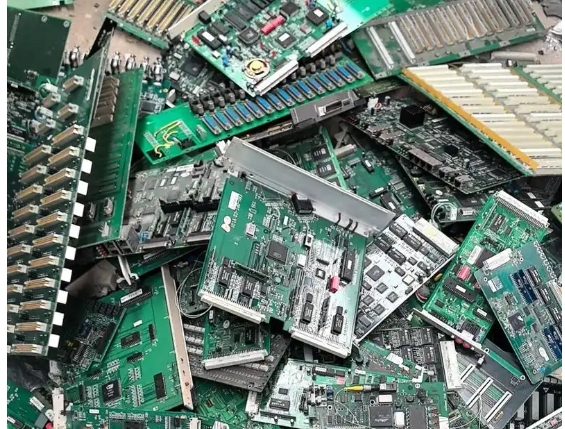The following are the core methods and technical points of tin recycling process, classified and explained according to the characteristics of raw materials and recycling goals:

⚗️
1、 Chemical method
Acid leaching method
Principle: Dissolve tin in waste with acid solution to generate soluble tin salts (such as tin sulfate), and then obtain metallic tin through displacement or electrolysis.
Scope of application: Waste materials with high tin content (such as tin slag and tin plating waste liquid).
Recovery rate:>90%, acidic waste liquid needs to be treated to prevent pollution.
Solvent extraction method
Principle: Selective organic solvents (such as tributyl phosphate) are used to extract tin ions, followed by back extraction and purification.
Advantages: Suitable for low concentration tin waste liquid (such as wastewater), with high recovery rate.
Low temperature reduction method
Technology: Using a carbon thermal reduction synergistic molten salt medium (NaCl KCl), SnO ₂ is reduced at 300-500 ℃.
Advantages: Energy consumption reduced by 65% (<1500kWh/ton), recovery rate of 97%, purity of 99.9%, suitable for low-grade tin slag (SnO ₂ 5-15%).
⚙️
2、 Physical Law
Electrolytic method
Principle: Tin containing waste liquid is used as an electrolyte, and tin ions are reduced and deposited at the cathode.
Scope of application: High purity tin recycling (such as electronic waste), capable of processing waste tin containing impurities.
Melting method
Process: High temperature melting waste (>232 ℃), density separation of tin and impurities.
Key: Accurate temperature control (245 ± 5 ℃), preventing oxidation losses.
Gravity sorting
Application: After crushing and screening, tin particles (>0.1mm) are separated using shaking tables and jigs.
Scenario: Pre treatment of tin ore and smelting slag.
♻️
3、 Joint process (applicable to complex materials)
Re selection flotation combination
Process: Coarse grained reselection tailings → Fine grinding → Flotation recovery of fine cassiterite.
Effect: Comprehensive recovery rate increased by 15%, cost reduced by 20%.
Magnetic separation reselection combination
Application: Magnetic separation for iron/tungsten removal → reselection for tin extraction, suitable for iron bearing coexisting ores.
?
4、 Environmental Protection and Efficiency Enhancement Technologies
Biological Law
Principle: Microorganisms adsorb tin ions to form precipitates.
Current situation: Environmental protection but low recycling rate, technology waiting to mature.
Waste gas/liquid treatment
Requirement: Acidic waste liquid needs to be neutralized (pH 5-9), and exhaust gas should be adsorbed or catalytically converted by activated carbon (CO → CO ₂).
?
Key factors in process selection
Factor Explanation
Raw material characteristics: high tin waste → chemical method;
Low grade/fine particles → flotation or low-temperature reduction;
Containing iron/tungsten → magnetic separation combined
Cost control: Low temperature reduction has the lowest energy consumption, while biological methods have high costs but are environmentally friendly
Environmentally compliant exhaust gas requires CO catalytic conversion, and the concentration of heavy metals in the waste liquid is ≤ the environmental limit
Note: The current cutting-edge directions include supercritical CO ₂ separation coating, AI intelligent sorting, biological leaching and other technologies to improve the efficiency of complex waste recycling.
 English
English  Español
Español  Português
Português  русский
русский  français
français  日本語
日本語  Deutsch
Deutsch  Tiếng Việt
Tiếng Việt  Italiano
Italiano  Nederlands
Nederlands  ไทย
ไทย  Polski
Polski  한국어
한국어  Svenska
Svenska  Malay
Malay  বাংলা
বাংলা  हिन्दी
हिन्दी  Pilipino
Pilipino  Türk
Türk  عربى
عربى  Indonesia
Indonesia  norsk
norsk  čeština
čeština  Українська
Українська  Javanese
Javanese  فارسی
فارسی  తెలుగు
తెలుగు  Burmese
Burmese  български
български  Latine
Latine  Azərbaycan
Azərbaycan  Српски
Српски  Esperanto
Esperanto  Afrikaans
Afrikaans  Català
Català  Cymraeg
Cymraeg  Беларус
Беларус  Hrvatski
Hrvatski  Kreyòl ayisyen
Kreyòl ayisyen  Shqiptar
Shqiptar  Bosanski
Bosanski  Кыргыз тили
Кыргыз тили  ಕನ್ನಡ
ಕನ್ನಡ  IsiXhosa
IsiXhosa  Chichewa
Chichewa  Somali
Somali  O'zbek
O'zbek  հայերեն
հայերեն  Sundanese
Sundanese  Malagasy
Malagasy 






